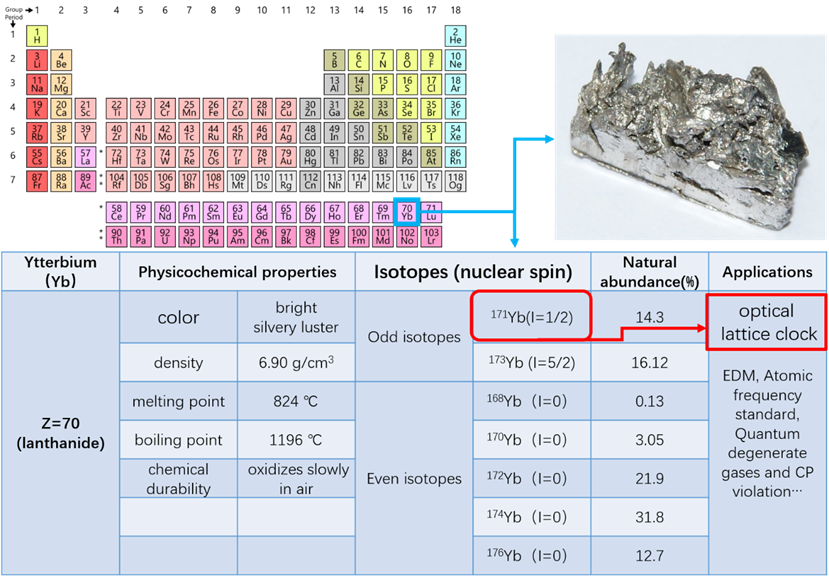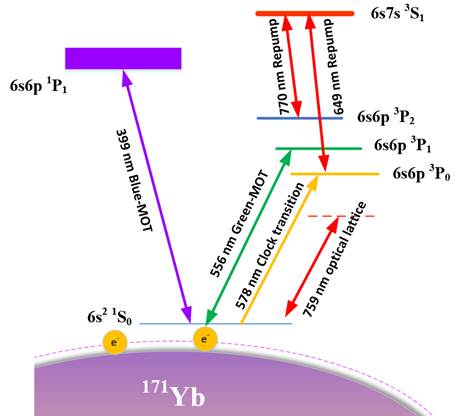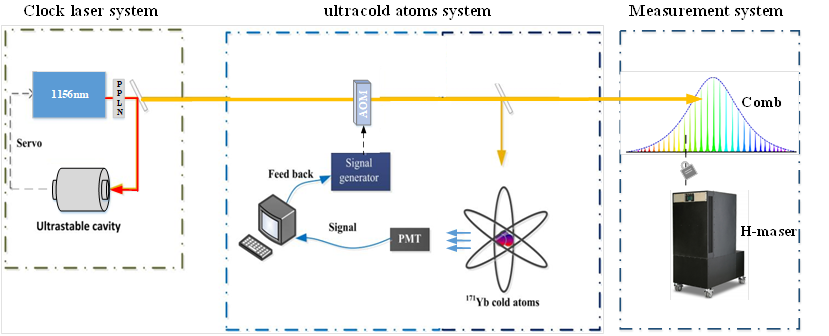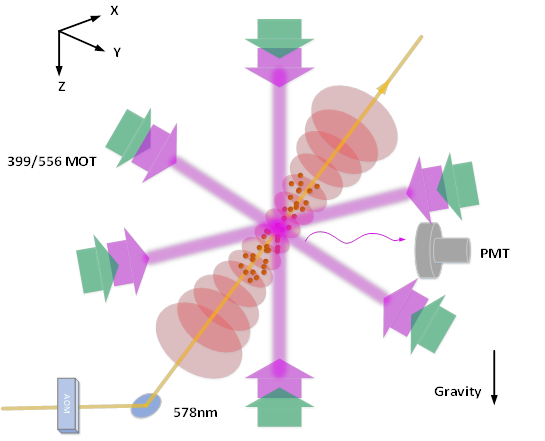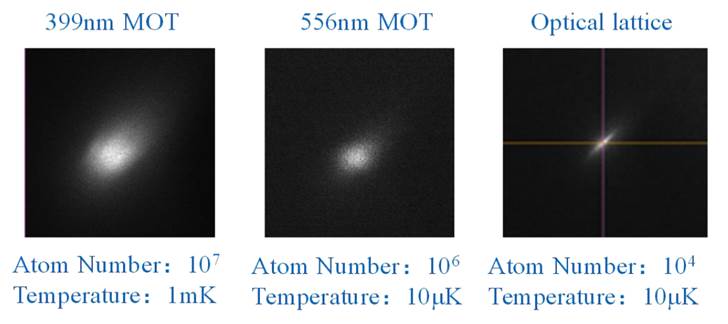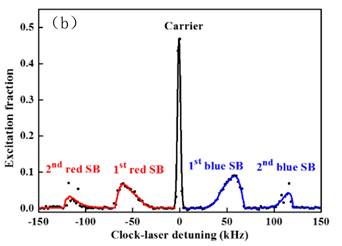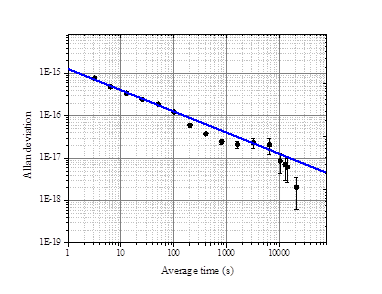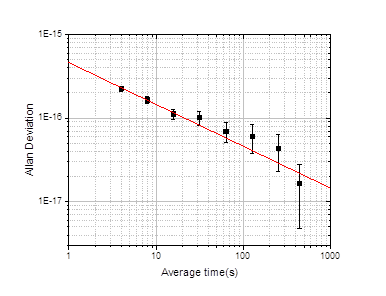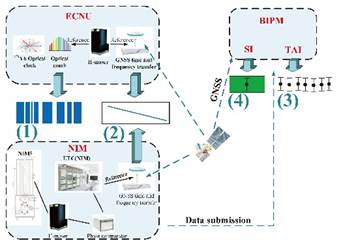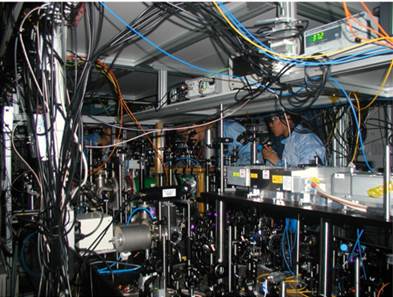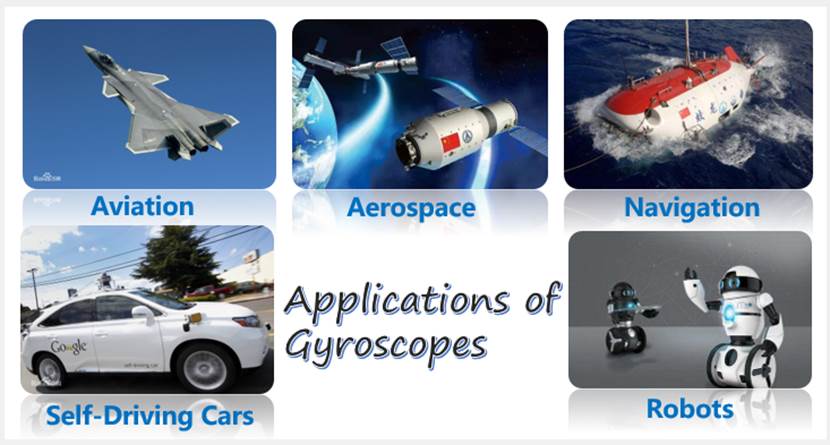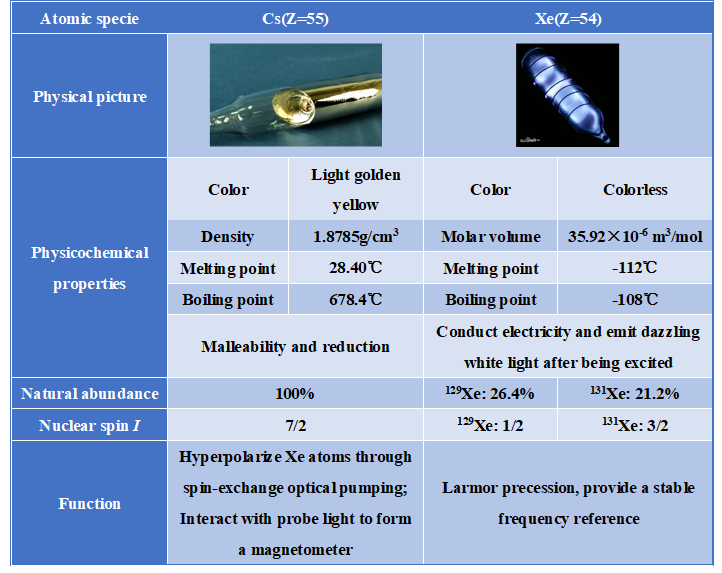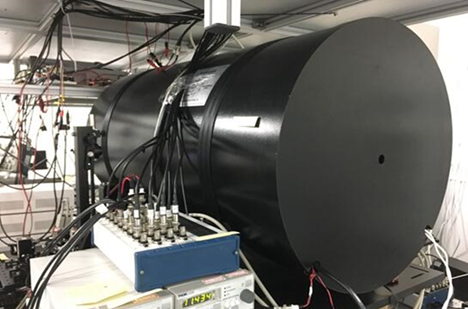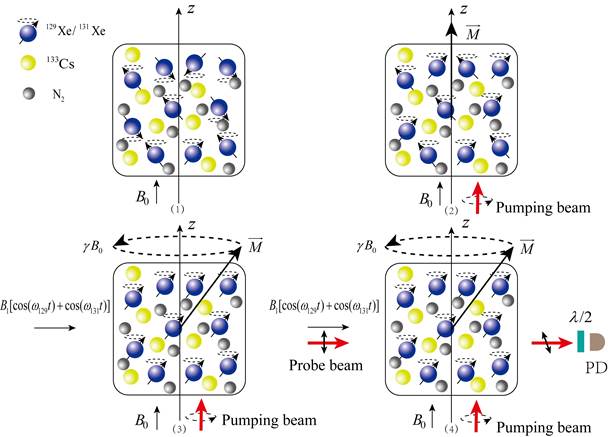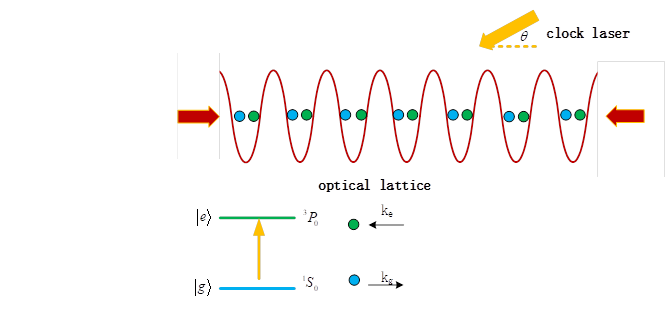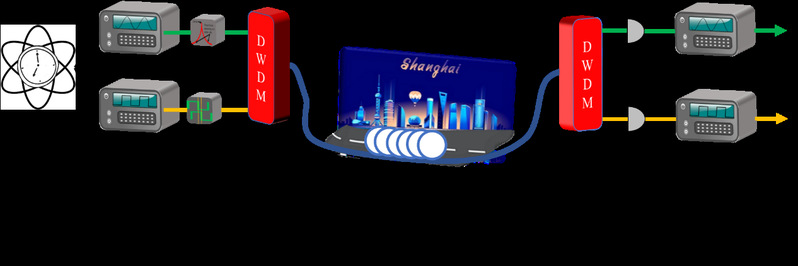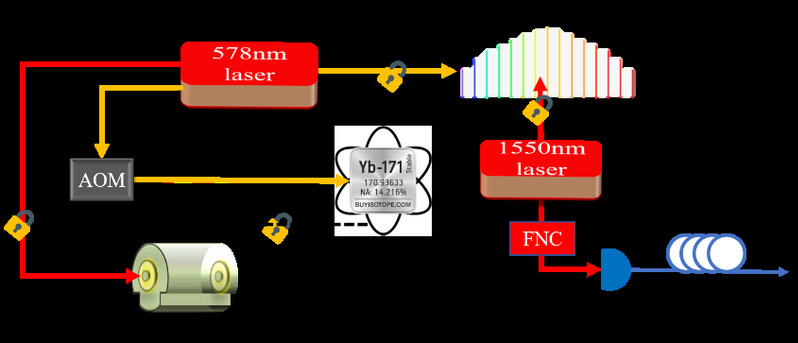About
Education1) 1994/09-1997/06, Studying for Doctor’s degree, Key Laboratory of Quantum Optics, Shanghai Institute of Optics and Fine mechanics, Chinese Academy of Sciences。 2) 1988/09-1991/06, Studying for Master’s degree, Department of Electronics and Engineering, Hangzhou University。 3) 1980/09-1984/06, Studying for Bachelor's degree, Department of physics, Hangzhou University。 WorkExperience1) 2006/04-present, Professor, State Key Laboratory of Precision Spectroscopy, East China Normal University. 2) 2003/07-2006/03, Postdoctoral fellow, Department of Physics, Pennsylvania State University, USA. 3) 2000/11-2003/06, Postdoctoral fellow, JILA (Joint Institute for Laboratory Astrophysics), National Institute of Standards and Technology and University of Colorado. 4) 1998/04-2000/10, Postdoctoral fellow, Department of Physics, Seoul National University, Korea. 5) 1997/07-1998/03, Assistant researcher, Key Laboratory of Quantum Optics, Shanghai Institute of Optics and Fine Mechanics, Chinese Academy of Sciences. 6) 1984/07-1994/08, Assistant、Lecturer, Department of physics, Hangzhou University. ResumeDr. Xinye Xu has been a professor of State Key Laboratory of Precision Spectroscopy (SKLPS) and Department of physics, East China Normal University (ECNU) since 2006. He is director of Committee of Laser Engineering and Technology, Shanghai Society of Optics. He is a member of Committee of Time and Frequency, Chinese Society of Metrology and Measurement. He is an executive member of the first council of a branch of Quantum Sensor and Precision Measuring Instrument, Chinese Society of Instrument and Control. He was a member of the expert group on fundamental physics of microgravity in the field of space science and applications of manned space engineering. He was a member of Program Committee of International Conference on Atomic Physics (ICAP) in 2010 and 2016, respectively. He was vice-director of SKLPS from 2007 to 2015. He also received the fund from Shanghai Excellent Academic Leaders Program. He received his Ph.D. degree in Shanghai Institute of Optics and Fine Mechanics, Chinese Academy of Sciences in 1997. He went to the Seoul National University, South Korea in 1998 to carry out the research on cold atoms guided by the laser beam,achieving the first guidance of cold rubidium atoms in a hollow laser beam and establishing the corresponding theoretical model. In 2000, he moved to Joint Institute of laboratory Astrophysics (JILA) in United States and engaged in strontium optical clock research,he discovered the different laser cooling mechanisms of strontium atoms with odd-even isotopes, pointed out that Fermi strontium atoms have a sub-Doppler cooling mechanism, and confirmed that strontium atoms have decoherence channels in high-temperature environments. In 2003, he went to Department of Physics in Pennsylvania State University in the United States to do cesium fountain clock research, achieving a juggling cesium fountain clock and accurately measuring the phase shift caused by the collision of cold atoms for the first time. In 2006, he returned to China and came to Department of Physics and SKLPS at East China Normal University to conduct research on precision spectroscopy and precision measurement. His main research areas include cold ytterbium atomic optical clocks and atomic gyroscopes. A cold ytterbium atomic optical clock with international advanced level has now been developed at East China Normal University. The absolute frequency of the ytterbium atomic clock's transition has been accurately measured, and the data has been adopted by the International Bureau of Weights and Measures, achieving the first successful reporting of China's ytterbium atomic optical clock to the International Organization of Weights and Measures. The ytterbium atomic optical clock based on the clock-transition of the inner shell electron was realized. For the first time, important physical quantities such as the absolute frequency and high-order polarizability of this clock transition were measured, providing important information for further theoretical analysis. The absolute frequencies of the relevant transitions within the ytterbium atomic optical clock were precisely measured, filling some gaps in spectral data, etc. During this period, he presided over and undertook several projects of the National Key Basic Research Program, as well as key and general projects of the National Natural Science Foundation of China. The scientific research achievements obtained have been published respectively in academic journals such as Nature, Phys. Rev. Lett., and Phys. Rev. X. Other Appointments1) From 2007 to 2015, deputy director of the state key laboratory of precision spectroscopy, East China Normal University. 2) From 2007 to now, a member of Committee of Time and Frequency, Chinese Society of Metrology and Measurement. 3) From 2009 to now, he is a visiting professor and member of the academic committee of key laboratory of quantum optics, Shanghai institute of optics and fine machenics, Chinese Academy of Sciences. 4) In 2010, a member of the program committee of the International Conference on Atomic Physics (ICAP’2012). 5) From 2012 to now, director of Committee of Laser Engineering and Technology, Shanghai Society of Laser. 6) In 2012, the outstanding academic leader of Shanghai. 7) In 2016, a member of the program committee of the International Conference on Atomic Physics (ICAP’2016). 8) From 2016 to now, a member of academic committee of Key Laboratory of Time and Frequency Metrology and Standards, State Administration for Market Regulation, PRC. 9) 2018-present, a member of the academic committee of the Key Laboratory of Atomic Frequency Standard, Chinese Academy of Sciences. 10) 2018-present, a member of the editorial board of Navigation, Positioning and Timing. 11) From 2019 to now, an executive member of the first council of a branch of Quantum Sensor and Precision Measuring Instrument, Chinese Society of Instrument and Control. 12) From 2019 to 2024, a member of the expert group on fundamental physics of microgravity in the field of space science and applications of manned space engineering. 13) In 2026, co-chair of the International Conference on Atomic Physics (ICAP'2026). Research FieldsProfessor Xu’ research fields are atoms, molecules and optical physics. His main research interests are precision spectroscopy and precision measurement. Specifically, it includes laser cooling and capture of neutral atoms, cold atom guidance, fountain atomic clocks, optical atomic clocks, atomic interferometers, atomic gyroscopes, nonlinear optics, ultra-stable and ultra-narrow laser systems, quantum coherent manipulation based on optical frequency combs, interaction between cold atoms and ultrafast laser pulses, High-resolution photoassociation spectroscopy, quantum simulation and quantum computing based on cold atoms, etc. His research group is currently developing ytterbium atomic optical clocks that can be used in fields such as metrology, communication and precision measurement, and is also studying atomic gyroscopes for inertial navigation. The following is an introduction to several research projects currently being carried out by his research group: Project 1: Study of Ytterbium Optical Clocks 1. Introduction of Yb At present, the neutral atomic optical clocks in the world mostly use alkaline earth metals, such as Sr, Yb and Hg atoms. And Yb has been one of the best atoms for optical lattice clocks in many institutes worldwide due to the several merits, for instance, numerous isotopes, the simple and clear energy level structure, available lasers for cooling and clock interrogation.
2. Energy levels The ground state electronic structure of Yb atoms is [Xe]4f146s2, and there are two electrons in the outermost electron layer. The relevant energy levels and transitions of Yb are shown in Fig. 1. The relevant transitions of the optical clock experiment are described as follows:
Fig.1 Relevant energy level of 171Yb 6s21S0-6s6p 1P1: natural linewidth about 29 MHz, 1P1 state lifetime 5.5 ns, used for the first-stage Doppler cooling, Zeeman slower and fluorescence detection. 6s21S0-6s6p 3P0: this is a double forbidden transition, the nuclear magnetic moment of the 3P0 state has hyperfine interactions with the 1P1 and 3P1 states, and gains a finite lifetime and non-zero decay rate to ground. The natural linewidth is nearly 10 mHz, which is favorable for high-performance clocks. 6s21S0-6s6p 3P1: natural linewidth about 182 kHz, upper-level lifetime 873ns.Using the narrow transition for the second-stage Doppler cooling of ytterbium atoms, a lower temperature of the cold atoms can be obtained. Meanwhile, it is also used to spin-polarization of the atoms. 6s6p 3P0, 2-6s7s 3S1: used to repump the atoms on 6s6p 3P0 and 6s6p 3P2 back to the 6s21S0 ground state to achieve normalized detection. 3. Brief introduction of Yb optical clock The Yb optical lattice clock consists of ultracold atoms system, ultra-narrow clock laser system, and optical frequency comb system (Fig. 2). Ultracold atoms system is the pivotal part of optical clock. With the complicated system and advanced technology, optical clocks have been one of the most challenging scientific projects.
Fig.2 The experimental setup of a 171Yb optical clock system
Fig.3 The schematic diagram of a 171Yb optical clock 1) Cooling of 171Yb (1) The Yb oven is heated to 400 ℃. And the atoms are collimated by two direction optical molasses(2D-OM); (2) Then the atoms with a speed about 300 m/s are slowed down to approximate 10 m/s by Zeeman slower, and confined in 399 nm magneto-optical-trap (Blue MOT). (3) The atoms are cooled to ~1 mK in 399 nm MOT, then loaded into 556 nm MOT (Green MOT) and cooled to below 10 uK. At last, the atoms are loaded into optical lattice (OL, 759 nm), and clock transition interrogation are operated in OL. The fluorescence signal is collected by photomultiplier (PMT) and intensified charge-coupled device (ICCD).
Fig. 4 Images of atomic cloud in MOTs and OL 2) State preparation and clock interrogation (1)171Yb with nuclear spin I=1/2, yields two sub-states ( (2)The linewidth and stability of the clock laser are important factors that limit the short stability of the atomic optical clock. The 1156 nm laser is lock onto an ultra-stable FP cavity with 290000 fineness to obtain sub-Hz linewidth. Frequency doubled clock laser performed clock interrogation,then 649 nm and 770 nm laser are applied to repump atoms back to 1S0 state. 3) Evaluation of clock performance The sideband spectrum and carrier spectrum of 578 nm clock transition is shown in Fig. 5, with a Rabi probe time of 600 ms, we obtain 1.9 Hz linewidth atomic spectrum, which is slightly wider than the Fourier-limited linewidth. And then, the 578 nm laser was locked on the clock transition spectrum of the cold ytterbium atom. The in-loop instability reaches 9×10-18 after an averaging over a time of 20000 s. By synchronous comparison between two clocks, we have achieved the fractional instability of a single system assessed to 4.6×10-16/τ1/2, as shown in Fig. 6.
Fig. 5 (L)The sideband and carrier spectrum of the clock transition; (R) the carrier spectrum of the clock transition
Fig. 6 (L)The in-loop instability of the ytterbium optical clock; (R)The instability of a single clock. 4. Absolute frequency measurement The absolute frequency measurement is one of the important contents of optical clock experiment, and also marks the final establishment of the optical clock. Generally, optical frequency should refer to atomic transition and optical comb is used to link optical frequency and microwave frequency standards. In our experiment, the 578nm laser frequency was measured by optical frequency comb with respect to the H-maser in the closed-loop locking process, and calibrated through the GPS carrier phase frequency transmission link between East China Normal University (ECNU) and China Metrology Research Institute (NIM), so as to realize the traceability of the optical frequency to the SI second. After 15 days of continuous measurement, the uncertainty of the entire experimental system was evaluated, the absolute frequency was determined to be 518 295 836 590 863.30(38) Hz with a fractional uncertainty of 7.3 × 10-16. The work was successfully published in Metrology (Metrologia 57, 065017 (2020)) in October 2020, and was highly praised by the reviewers, “The result is in good agreement with the recommended value in neutral Yb as a secondary representation of the SI second endorsed by the International Committee for Weights and Measures (CIPM).” In addition, we also submitted the absolute frequency measurement value to the Consultative Committee for Time and Frequency (CCTF), and received the acceptance notice by the Frequency Standards Working Group (WGFS) in November 2020.
(a) (b) Fig.7 (a)Schematic of frequency calibration of the ECNU Yb1 optical lattice clock via NIM; (b) the absolute frequency values of 171Yb clock transition measured by different laboratories.
Yb1 Yb2
Fig. 8 Two Yb atomic optical clock systems at ECNU 5. Prospect Thanks to the rapid progress of cold-atom precision spectroscopy technology, optical clocks have made a great progress in recent years, and the instability and uncertainty of the best optical clocks in the world have been below Project 2: Research on NMR Gyroscope Inertial navigation system (INS), as a robust self-contained navigation system without the need for external references, provides high concealment and exceeds the limit of time, environment and region. In specific environment (such as caves and depths), where GPS and BDS can’t function well, it can still achieve the precise navigation of the carrier. As one of the key components of inertial navigation and inertial measurement, the gyroscope is widely used in aviation, aerospace, navigation and other military and civil fields.
Fig.1 Applications of gyroscopes The gyroscope in using limits the further development of the INS owing to it can’t meet high precision and compact sizeat the same time. With the advantages of high precision, small size, low cost and insensitive to acceleration, the nuclear magnetic resonance gyroscope(NMRG) is developing towards chip scale and strategic precision, which has become a new research hotspot in inertial navigation field. 1. Introduction of atoms Nuclear magnetic resonance gyroscopes mostly adopt the scheme of alkali-metal and noble-gas. The most common alkali-metal atoms are Rb, Cs, and K. Owing to the Cs atoms have higher vapor pressure at the same temperature compared to other alksali-metal atoms andthere is only one stable isotope of Cs, 133Cs is selected in the experiment. The Xe atoms have two stable isotopes-129Xe and 131Xe, which can eliminate the interference of static magnetic field. Therefore, the ensemble of 133Cs-129Xe/131Xe is selected in the experiment.
2. Energy levels In the experiment, the lasers mainly interact with 133Cs atoms. The relevant energy levels and transitions of 133Cs are shown in Fig. 2. 62S1/2-62P1/2: The transition is the D1 line of 133Cs atoms. The circularly polarized light realizes the optically pumped polarization of 133Cs atoms. 62S1/2-62P3/2: The transition is the D2 line of 133Cs atoms. By forming a magnetometer with the linearly polarized light, we detect the precession of noble gas atoms.
Fig.2 Relevant energy levels of 133Cs 3. Composition and working process of NMRG
Fig.3 Schematic diagram of the experimental setup
Fig.4 Photograph of the experimental setup The key part of NMRG is the vapor cell containing a droplet of alkali metal (Cs), noble gas(129Xe/131Xe), and buffer gas(N2). The working principle of NMRG can be divided into three parts: Optical Pumping Polarization, Nuclear Magnetic Resonance Process and Precession Frequency Detection. 1) Optical Pumping Polarization: The pumping beam polarizes the electronic spins of alkali metal atoms, and the noble gas atoms are polarized by alkali metal atoms through spin-exchange collisions. 2) Nuclear Magnetic Resonance Process: An oscillating magnetic field is utilized to drive the nuclear spins deviate from the static magnetic field and precess with the Larmor frequency. 3) Precession Frequency Detection: We detect the nuclear precession frequency by applying an atomic magnetometer. When the gyroscope rotates, the precession frequency detected by the atomic magnetometer would change. By measuring the corresponding frequencies, the rotation angular velocity of the gyroscope can be obtained.
Fig.5 Schematic diagram of nuclear magnetic resonance gyroscope 4. Experimental results At present, the NMRG experimental system including the three-axis atomic magnetometer has been built. Magnetic field sensitivities of 100 fT/Hz1/2 in x and y axes and 20 fT/Hz1/2 in the z axis are achieved. Compared with other similar three-axis atomic magnetometers, the realized magnetic field sensitivity and frequency bandwidth are better, and it is more suitable for precise measurement of the angular velocity. The research results have been published in the Applied Physics Letters (Appl. Phys. Lett., 2020, 116(3): 034001). As a key technology for optimizing the performance of NMRG, the high-sensitivity atomic magnetometer would produce significant application value in the field of inertial navigation.
Fig.6 Responses in three axes with respect to the fields
Fig.7 Magnetic field sensitivity of the three-axis atomic magnetometer Project 3: Quantum Computation and Quantum Simulation 1. Brief introduction of topological quantum computation and Majorana Fermions Quantum computation is the use of quantum phenomena such as superposition and entanglement to perform computation. Because quantum computing has the characteristics of parallel computing, its potentially computing efficiency far exceed the traditional calculation. However, standard quantum computation has a serious problem that the quantum state can easily be disturbed by the environment and then decoherence. The topological quantum computing employing non-Abelian anyons would be fault tolerance guaranteed by physics at the hardware level and can be effectively protected against the disturbing of the local environment. Majorana fermion is an electrically neutral fermion, which is its own antiparticle. In topological superconductor and topological superfluid, Majorana fermions can exist as emergent quasiparticles that is the simplest non-Abelian anyons following non-Abelian statics. An exchange(braid)of Majorana fermions can contribute not just phase change , but can send the system into a different state. The operation of the quantum gate of topological quantum computing can be realized by braiding Majorana fermions and is independent of the details of the trajectories.
Fig.1 Schematic diagram of braiding Majorana Fermion 2. Quantum simulation with cold atoms Quantum simulation means artificial constructing a quantum system, which is easier to manipulate and study to simulate the behavior of another quantum system. With the development of experimental techniques in cold atomic systems, ultracold atomic systems can be used to simulate some important models in condensed matter and to study novel states of matter. Cold atomic systems are highly flexible and controllable, and the systems are much cleaner compared to solid systems. In cold atomic systems, an optical lattice with periodic potential can be experimentally constructed by the interference of laser field, and atoms are trapped in the optical lattices. An optical lattice is a versatile tool to perform quantum simulations. which is analogous to the lattice structure of solid-state systems. In addition, the Feshbach resonance technique provides a powerful tool for effectively tuning the interactions between atoms. Cold atoms with synthetic spin-orbit coupling provides a convenient quantum simulation platform for the study of topological states of matter. The cold atomic system is an ideal platform for generating and detecting Majorana fermions。
Fig.2 Schematic diagram of synthetic spin-orbit coupling induced by clock laser 3. Research contents This project focuses on the theoretical and experimental study of topological states and Majorana fermions in cold ytterbium atomic systems. The main research contents of the project include: (1) The control of interactions between cold ytterbium atoms. We plan to use orbital Feshbach resonance and other techniques to realize the tuning of the scattering length between ytterbium atoms, and to investigate problems such as BEC-BCS crossover in cold ytterbium atomic systems (2) Synthetic spin-orbit coupling induced by the clock laser. Compared with the Raman-induced spin-orbit coupling scheme, Synthetic spin-orbit coupling exploiting the clock transition can effectively suppress the heating of atoms. We aim to generate synthetic spin-orbit coupling in ytterbium optical lattice clock by optical clock transition. On this basis, we plan to simulate the topological state of matter and explore the novel topological phase. (3) Study of Majorana fermions in cold ytterbium atomic systems. We are theoretically analyzing our scheme for the generation of Majorana fermions in quasi-one-dimensional or quasi-two-dimensional cold ytterbium system with synthetic spin-orbit coupling and estimating the experimental parameters. Then, we desire to experimentally realize the preparation of cold ytterbium atoms in the topological superfluid phase. Majorana fermions would appear in the topological defects such as the end of 1D atomic chain and 2D vortex which could be detected by radio frequency spectroscopy. On this basis, we would braid Majorana fermions and study their non-abelian quantum statistical properties.
Fig.3 Sketch of the scheme for creating Majorana fermion Project 4: High Precision Time & Frequency Transfer 1. Introduction of high precision time-frequency transfer The time and frequency standard with high stability and high accuracy is the goal that people have always been pursuing. Since the invention of the first atomic clock, the performance of atomic frequency standards has been continuously improved. To date, the research focus has shifted from microwave atomic clocks to the optical counterparts (i.e., optical clocks). However, the traditional free-space-based microwave signal transfer can no longer meet the remote synchronization and comparison for atomic clocks with higher precision. For instance, the comparison system represented by the satellite two-way time-frequency transfer (TWSTFT) cannot transfer highly stable optical clock signals. It has been shown that the optical fiber network is the most promising medium for precision optical frequency transfer. In addition to transfer optical carriers, currently available signals also include optical frequency comb and radio/microwave signals. Although the accuracy of radio/microwave transfer is no better than that of the optical carrier transfer, radio/microwave-based applications have higher flexibility, which makes the transfer system easier to deploy. Based on the optical fiber link, our team carries out high-precision radio/microwave transfer, high-precision optical frequency transfer and high-precision time transfer. In this way, the optical-clock signal of our team can be effectively distributed and shared, and the transfer system is geared to preparing remote optical-clock comparison and related applications. 2. Research contents 2.1 Radio/microwave frequency transfer For the optical fiber transmission of high precision RF frequency, the main problem is to eliminate the negative effects of transmission delay and drift accumulation caused by the disturbance of optical fiber link such as vibration, temperature, fiber aging, and so on. Two-way-time-frequency transfer (TWTFT), optical-mechanical temperature compensation, and electronic phase compensation methods are common schemes. Based on the electronic phase compensation method, the principle prototype of 100MHz RF transmission over a 50 km optical fiber link is established, and the stability of the transmission loop is better than 5×10-14 τ-1. The scheme is used for long-term hydrogen clock comparison.
Figure 1 Diagram of high precision time-frequency transfer based on optical fiber link 2.2 Optical frequency transfer Benefit from our optical atomic clock, optical frequency comb and optical fiber phase noise suppression technology. The high-precision optical frequency standard transfer link can transmit the frequency stability of the optical clock to the remote end directly through the optical fiber.
Figure 2 Diagram of high precision optical frequency standard transfer link 2.3 Time pulse transfer On the basis of high precision radio/microwave frequency transfer, the key of high precision time pulse transfer is to accurately measure the optical fiber delay and to accurately offset or compensate the optical fiber delay at picosecond level. The time delay compensation method can be realized by optical fiber delay line or radio frequency delay line. ******************************************************************************************************************************* We warmly welcome students who are interested to apply for the master's and doctoral programs in our research group! We sincerely welcome those who are willing to engage in scientific research to join our research group, apply for teaching and research positions, or conduct postdoctoral research, etc.! Feel free to contact Professor Xinye Xu at xyxu@phy.ecnu.edu.cn! Enrollment and TrainingCourse1. Postgraduate courses: 《Modern Atomic Physics》. 2. Undergraduate course: 1)《Theoretical Mechanics》; 2)《Experiments of Precision Optics I》. Scientific Research1) Shanghai Science and Technology Major Project, Subtask: "Cold Atomic Optical Clock and Time-Frequency Precision Measurement Technology”, 2019SHZDZX01, 2019/07-2026/05, Principal Investigator. 2) National key research and development project of China, Subject: “Quantum Optical Frequency Standards”, 2016YFA0302103, 2016/07-2021/06, Principal Investigator. 3) National High Technology Research and Development Program of China (863), Subject: “Nnuclear-spin Magnetic Resonance Technology”, 2014AA123401, 2014/09-2017/12, Principal Investigator. 4) National Natural Science Foundation of China, Key Project: "Study on Deep Cooling and Precise Manipulation of Ytterbium Atoms for Optical Clocks", 11134003, 2012/01-2016/12, Principal Investigator. 5) National key basic research and development project of China (973), Subject: “Optical Lattice Frequency Standards”, 2012CB821302, 2012/01-2016/08, Principal Investigator. 6) Shanghai Outstanding Academic Leader Program: "Research on Precision Spectroscopy and Precision Measurement Based on Cold Atoms", 12XD1402400, 2012-2014, Principal Investigator. 7) National Natural Science Foundation of China, General Program: “Theoretical and experimental Study on Three-dimensional Optical Lattice for Optical Atomic Clocks”, 10774044, 2008/1-2010/12, Principal Investigator.
Academic AchievementsSelected Publications:
Honor1) In 1993, awarded the third prize of Zhejiang Science and Technology Progress Award, fifth accomplisher. 2) In 2012, selected as an outstanding academic leader of Shanghai. 3) In 2020, awarded the Individual Contribution Award for the 50th Anniversary of Shanghai Laser Society. |
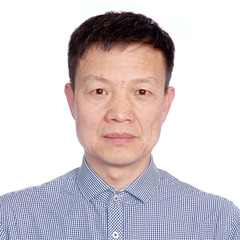
|
Xinye Xu |
